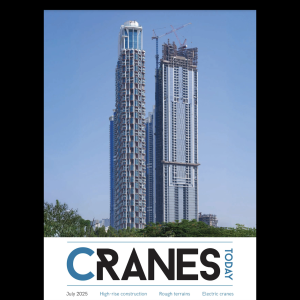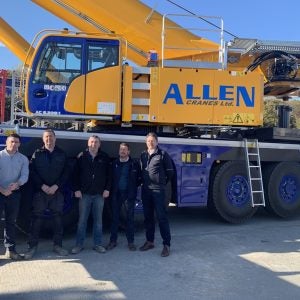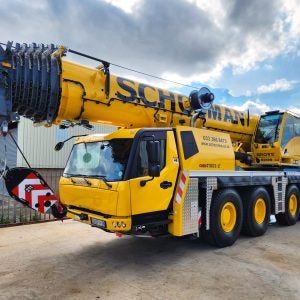The Steel Institute of New York (SINY) launched its legal action earlier this year; New York City’s answer to the initial complaint came last month. SINY’s complaint calls for declaratory relief: it takes the form of a request to the United States District Court for the Southern District of New York that it declare New York City’s crane laws unenforceable.
The first ground for complaint given by SINY’s attorneys is that city crane rules violate the pre-emption provision of the OSH Act. Attorneys from the same firm, Smith, Currie and Hancock, made a similar argument against Miami-Dade crane rules last year, and had the rules blocked. The core of the argument is that worker safety rules are covered by federal, not local, law; if individual states want to take their own approach to occupational safety they need to formulate a specific occupational safety plan and have it approved by the US federal secretary of labour.
Michael Cardozo, corporation counsel to the City of New York, answered the complaint. As the first stage of the process, the answer gives little detail on how the city plans to respond, but the city does deny all of the allegations. A New York City law department representative said that, while it could not comment in detail due to the pending litigation, it was confident the courts would determine that the City’s laws are not pre-empted by OSHA’s regulations.
New York City’s department of buildings says that the rules are necessary. Buildings commissioner Robert LiMandri said, “The crane industry needs more oversight, not less. Last year, our crane inspectors issued 400 Stop Work Orders for various concerns, and our work demonstrates the need for a constant vigilance over the industry. Improper crane installation, repair or operation can lead to catastrophic consequences, and the City must continue to work with OSHA and others to better protect all New Yorkers.”
William Shuzman, executive director of SINY, says, “Our organisation is made up of steel erectors. Most members use cranes, but as customers of crane owners and crane rental firms. Some of our members also own their equipment. Our purpose here is to ensure that work in the steel erection and crane industries is conducted as safely as possible. We believe the federal regulations create the safest possible working environment for the use of cranes. Conflicting standards, like these in New York, add cost and complexity, and ultimately lead to a less safe working environment.”
Shuzman explained the concept of pre-emption in detail: “The federal government has a body of regulation, the OSH Act, covering working safety, that has been in place for almost forty years. One section of the OSHA standards deals with the use of cranes. In 2003, OSHA began a Negotiated Rulemaking process, the Cranes and Derricks Advisory Committee (C-DAC) to review and rewrite its Crane and Derrick standard. The new draft standard is comprehensive, and due to come into affect soon.
“In accordance with federal law, OSHA has exclusive authority over worker safety. The one exception to this is for individual states that have developed comprehensive worker safety plans which have been submitted to and approved by the US Department of Labour. There are approximately 23 states that have such “state plans’. New York state is not one of these states, at least as far as non-public employees are concerned.
“Since New York state does not have a state plan, neither it nor its municipalities can regulate private sector employee safety.. The New York City crane regulations are an attempt to legislate worker safety.”
Some commentators have suggested that one approach New York City might take to answer the complaint would be to claim that the rules are aimed at public safety, and fall within the city’s powers, not worker safety. The city’s second affirmative defense of the complaint does, indeed, say that the rules have been ‘enacted pursuant to the city’s police power to protect the public health, safety and welfare’.
However, Shuzman argues that this defence has already been rejected by US courts: “There have been cases in the Supreme Court covering ‘dual purpose’ laws like this. The Gade case in 1992, for example, says that where a law regulates public safety as well as worker safety, it is still pre-empted by the OSH Act.”
OSH Act pre-emption is not the only argument SINY makes, however. The complaint gives four other reasons: that city rules violate the Supremacy Clause of the US Constitution; that they violate the Commerce Clause; that they violate procedural due process; and that they violate substantive due process.
In its complaint, SINY argues that the rules breach the Commerce Clause of the US Constitution, by placing an undue burden on interstate commerce. Shuzman says, “If a federal standard allows you to use cranes in other parts of the US, and NYC laws prevent you moving the crane across the city line, the New York laws would have a direct negative impact on the free flow of interstate commerce.”
SINY also alleges that the rules breach due process, both in terms of how crane rules are implemented on a day-to-day basis, and on how new rules have been developed. Shuzman says, “New York City does not allow the affected parties to these regulations to have any meaningful input in the development of new regulations. As the Department developed these new regulations, there have been a few meetings with the Department of Buildings, but there hasn’t been the normal give and take you would expect in this sort of meeting. We’ve been given an opportunity to speak, but we haven’t been given an opportunity to be heard; they’ve come to the table with their minds made up.”
The case looks likely to continue well into the spring or summer of next year. After two major accidents that caused multiple fatalities, and subsequent public outrage at perceived poor safety in the crane industry, New York is sure to defend its new rules vigorously. However, many in the crane and construction industry feel the new rules go far beyond what is needed and will cripple their ability to work safely and effectively. Both sides can be expected to make their case strenuously.






